2.2 Setting Up VM Management with the ZENworks Orchestrator Console
Before you can use the ZENworks VM Management Console, you need to:
-
Install and configure the Orchestrator Server and its components
For instructions, see
Installing and Configuring ZENworks Orchestrator Components
in the Novell ZENworks Orchestrator 1.3 Installation and Getting Started Guide. -
Make sure that your VM host machines and your VM Builder machines are recognized
-
Make sure that your main physical resources are registered
To accomplish the latter two points, complete the following tasks in order:
2.2.1 Discovering Physical Resources
After you have configured and set up your Orchestrator Server:
-
Open the ZENworks Orchestrator Console.
The console is displayed with the available grids displayed:

-
Click your grid in the tree view.
The Login dialog box is displayed:
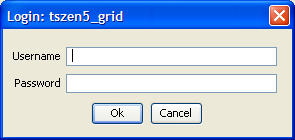
-
Enter your administrator username and password.
The console is displayed with the information expanded for the selected grid:
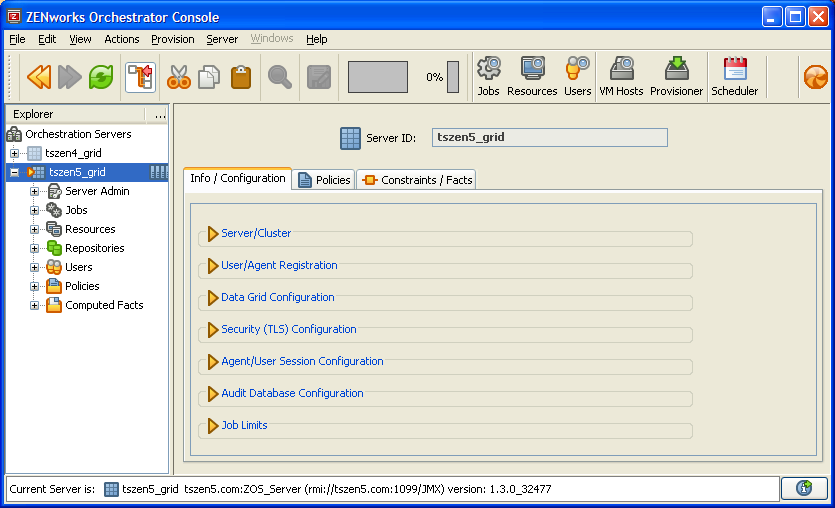
-
Click the button to display the tab:
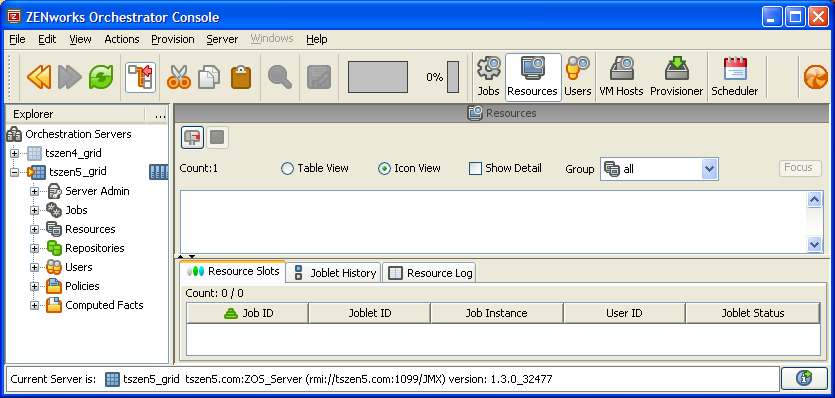
-
Click the mailbox (
 ) in the upper left of the Resources view to open the following dialog box:
) in the upper left of the Resources view to open the following dialog box:

-
Select to register the physical resources available, then click to display the available resources:
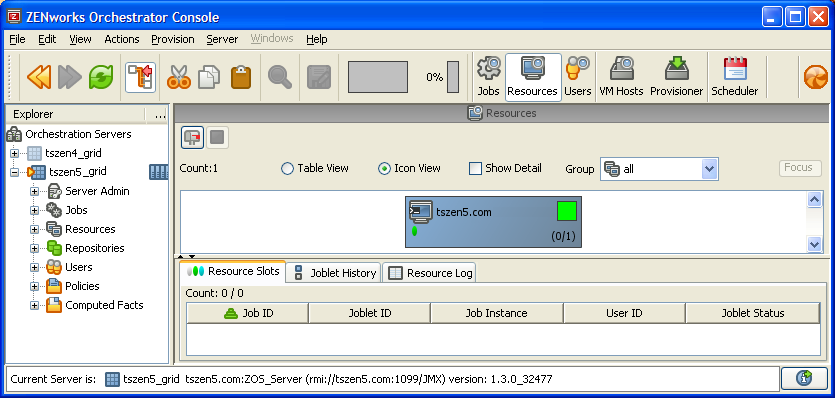
After your physical resources are registered, you can begin to build and discover the VM hosts and VMs in your data center, which brings the VMs into the control of the Orchestrator Server and allows you to install the Orchestrator Agent on any VMs that are already installed on your system. After the VM host machines have been discovered, you can also begin the process of creating VMs.
For information on creating VMs, see Section 3.2, Building a Virtual Machine and for information on discovering VMs, see Section 3.1, Discovering Existing Virtual Machines.
-
Continue with Section 2.2.2, Resuming the VNC Password Job.
2.2.2 Resuming the VNC Password Job
The VNC password was set when you ran the configuration script. The job must be activated because it is shipped in a paused state. This job opens up the VNC port on the VM host machines that are part of the VM Builder group in the Orchestrator Server and sets the previously specified password.
When this job is running it allows you to open a VNC session to the ZENworks VM Management Console or any other VNC client.
To resume the VNC job:
-
In the ZENworks Orchestrator Console, click the button.
The applicable portion of the console is illustrated here:
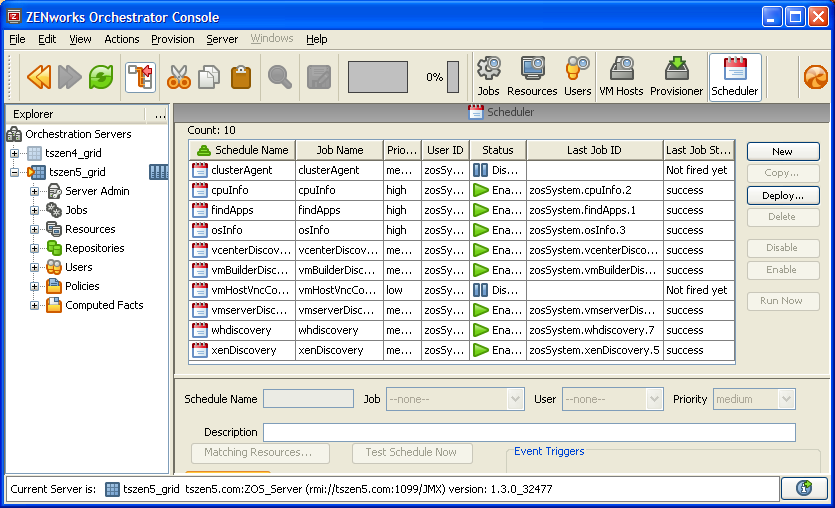
-
Select the job (indicated in blue):

-
Click , then click :
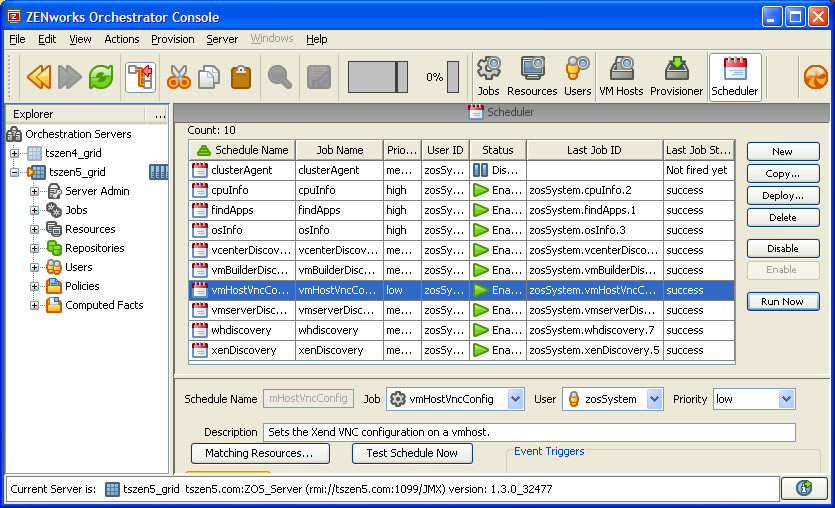
-
Continue with one of the following:
2.2.3 Setting Joblet Slots on Physical Machines
If your physical machine is going to be part of the group of Xen hypervisor-enabled machines that you want to use as VM Builder agent machines, you might want to increase the number of joblet slots on that particular physical machine.
To set joblet slot values:
-
In the ZENworks Orchestrator Console, select a physical resource in the left pane, then in the right pane, click the tab:
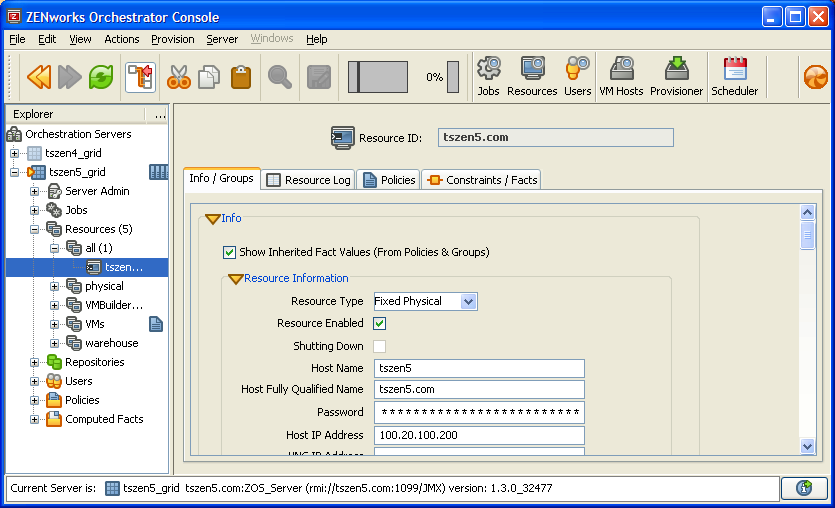
If necessary, click the
 icon to open the section.
icon to open the section.
-
Scroll down to view the field:
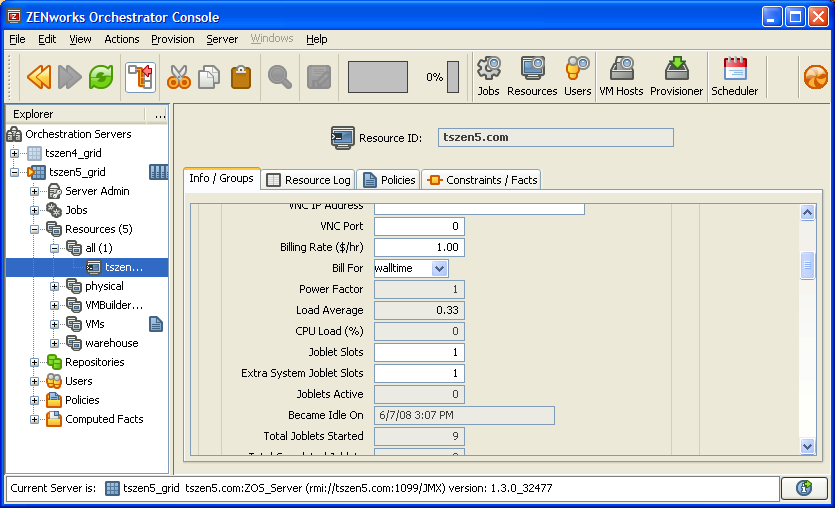
-
In the field, change the default of 1 to a higher value (depending on the capacity of the machine), then click > to make the change effective.
Two or three slots is the recommended number of joblet slots for most machines.
Additional joblet slots allows you to run multiple joblets on the machine, or build more than one VM at a time.
You can also make this change on non-VM Builder servers.
-
Continue with Section 2.2.4, Discovering Virtual Machine Hosts.
2.2.4 Discovering Virtual Machine Hosts
After you have discovered your physical resources, resumed the VNC job, and have set the correct number of joblet slots for the VM Builder host and other VM host machines, you can begin to discover and build VMs in your data center. For information on using the VM Builder to build your new VMs, see Section 3.2, Building a Virtual Machine. For information on discovering VMs in your data center, see Section 3.1, Discovering Existing Virtual Machines.
When you load ZENworks Orchestrator Console with active VM Management, you can use the console to manage VMs as resources in your data center. Before you can use your VMs, you need to discover the machines on which they reside and on which they will run.
-
In the ZENworks Orchestrator Console, click > to display the Discover VM Hosts dialog box.
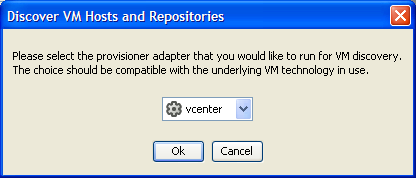
-
Select your provisioning adapter (, , or ) from the drop-down menu.
IMPORTANT:In order to use Xen 3.0 virtual machines, select .
For information on provisioning adapters, see Section 4.0, Provisioning Virtual Machines.
-
Click .
The following dialog box is displayed:

-
Click to view the Jobs section in the ZENworks Orchestrator Console and verify that the job has started.
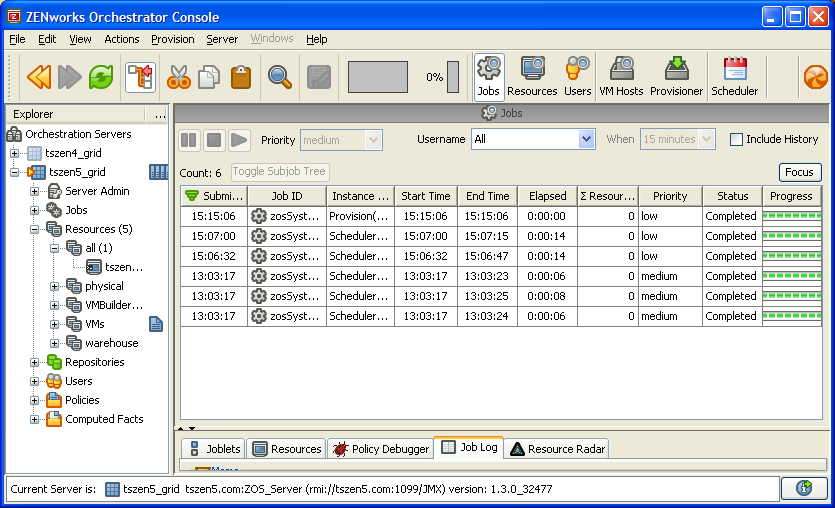
After your VM host machines are discovered, you can refresh your tree view or wait for the automatic tree refresh to see the VM host machine listed under the provisioning adapter, although no VMs are listed.
For a listing of the VM technologies and supported host and guest operating systems, see Section C.1, Virtual Machine Technologies.
-
Continue with Section 2.3, First Run Tutorial.